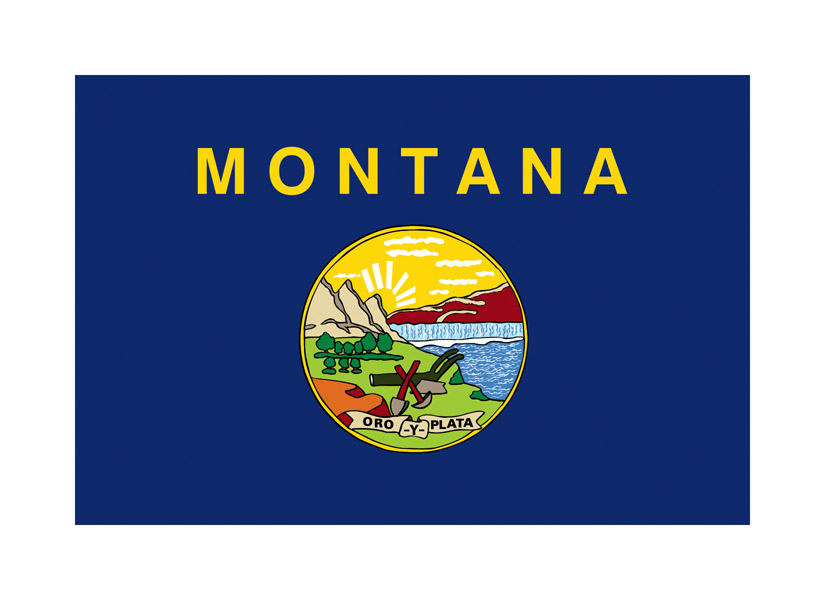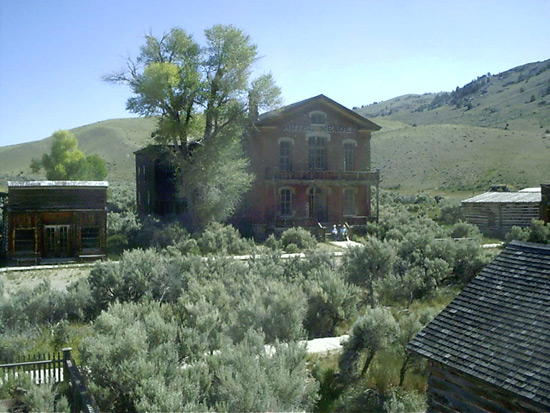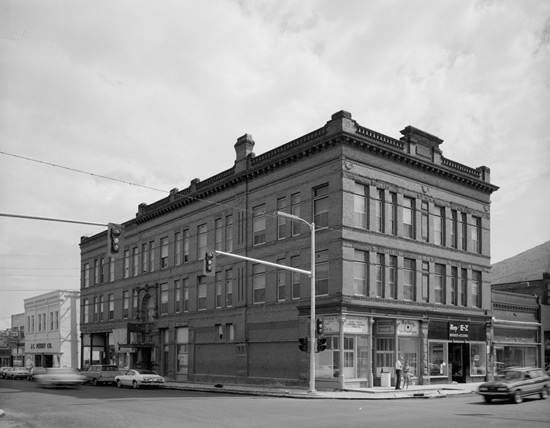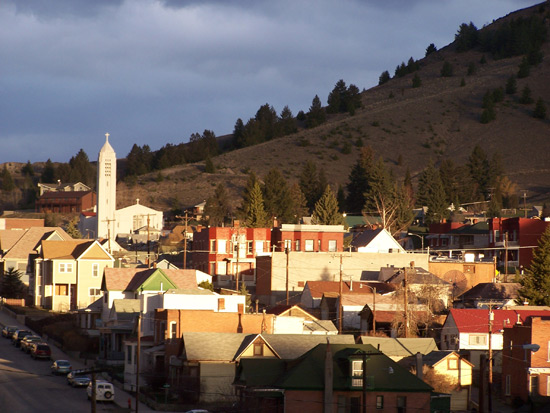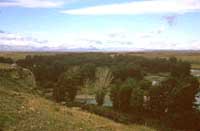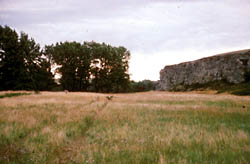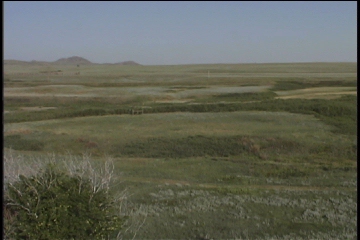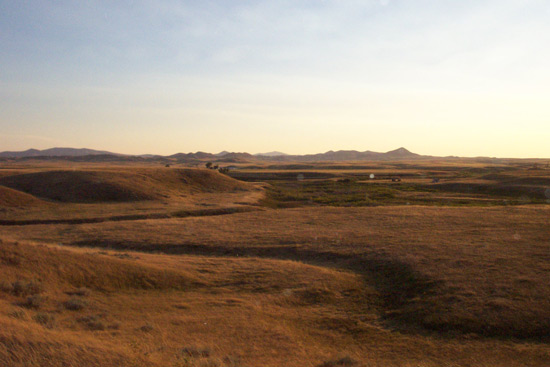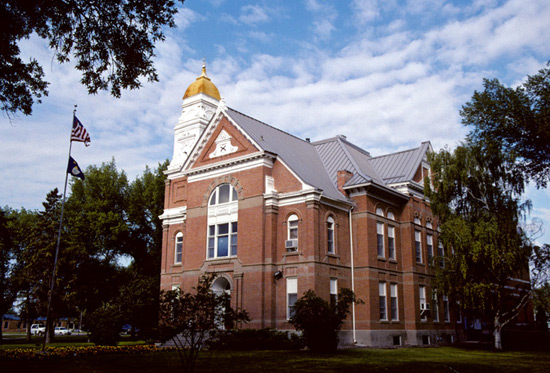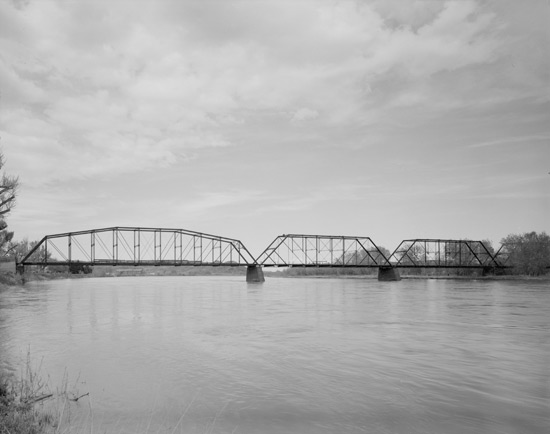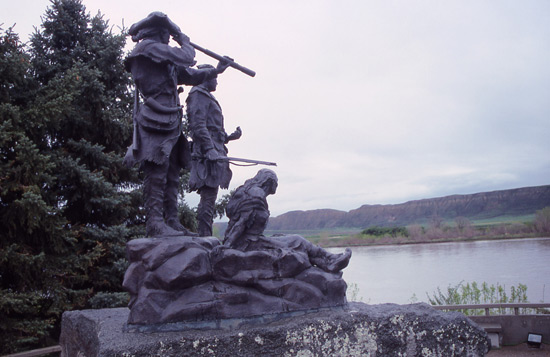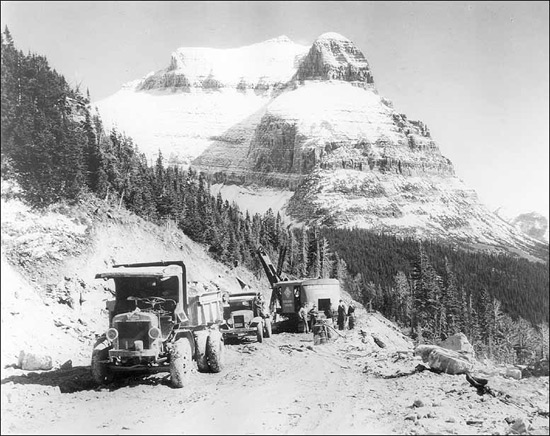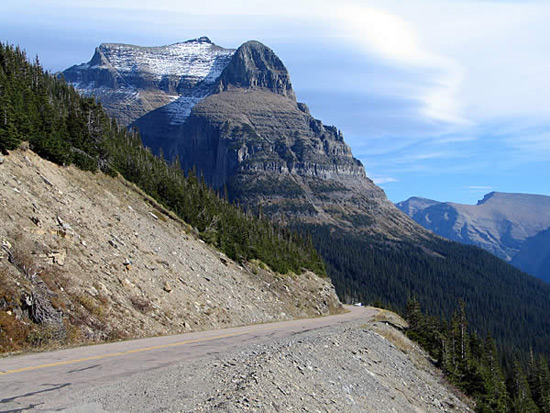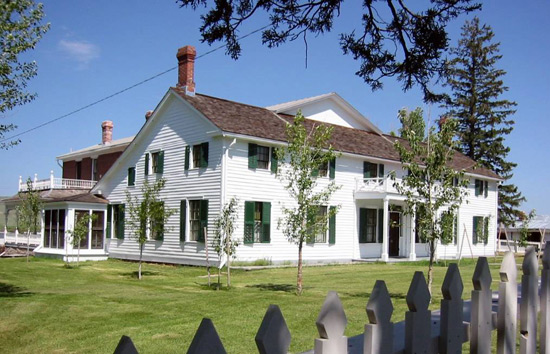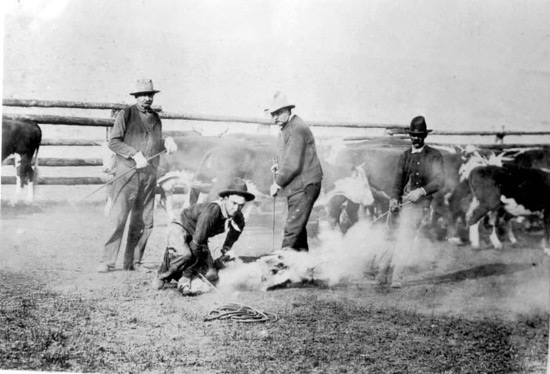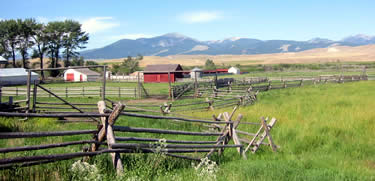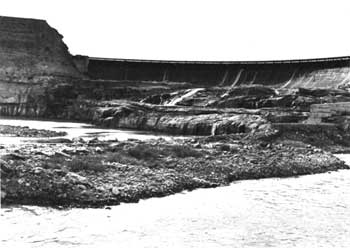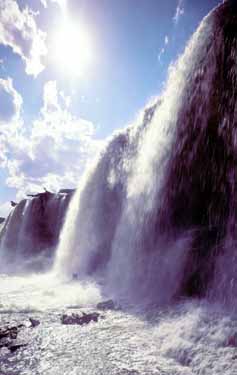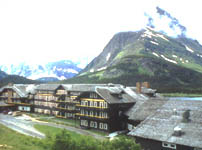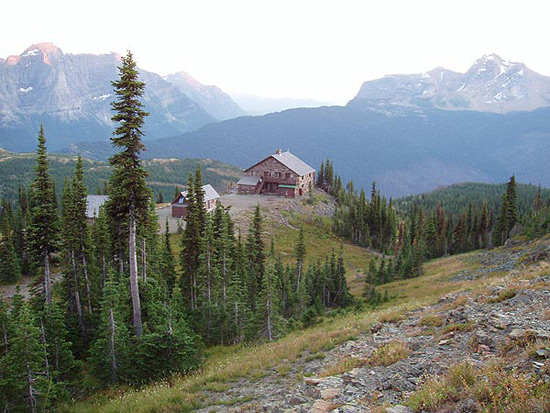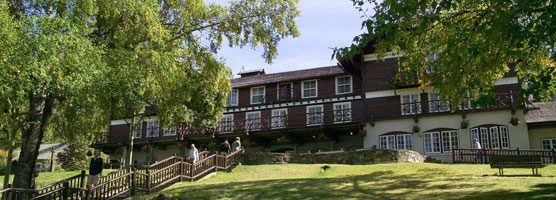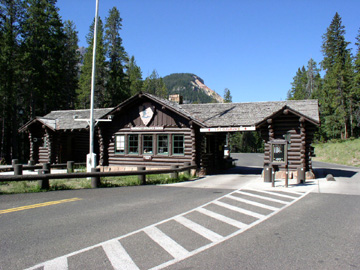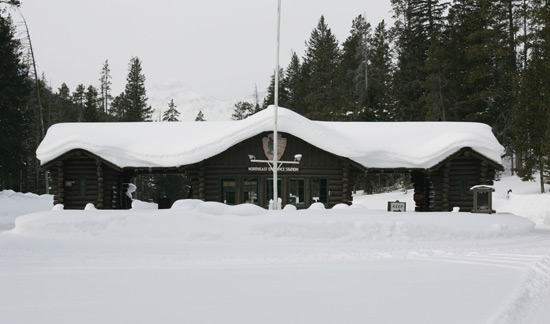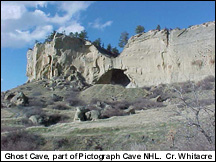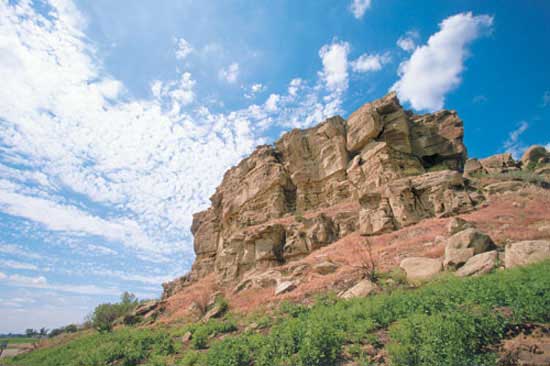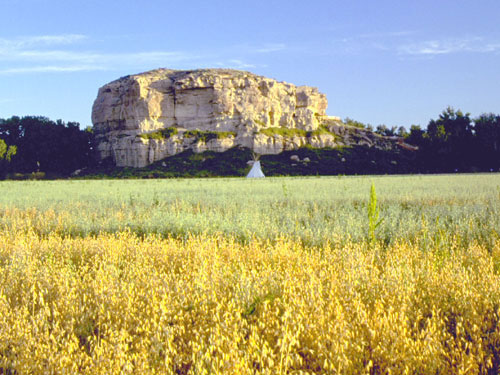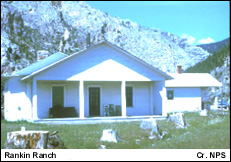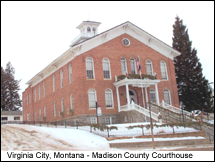Bannack Historic District
City: Dillon
County: Beaverhead
National Register #: 66000426
Type: n/a
Date of Designation: July 4, 1961
Public Access: Yes
Current Use: Commercial district; www.fwp.state.mt.us; [406) 834-3413.
Bannack sprang up almost overnight when gold was discovered in 1862. It became the first capital of Montana Territory in 1864. Remaining buildings are of frame and log construction, typical of a frontier boom town and reminiscent of its brief fame.
Butte-Anaconda Historic District
City: Butte (Anaconda)
County: Silver Bow
National Register #: 66000438
Type: Historic District: Historical
Date of Designation: July 4, 1961
Public Access: Yes
Current Use: Commercial District; www.co.silverbow.mt.us/www.butteinfo.org.
The American Labor History Theme Study, completed in 2003, identified Butte as one of 16 sites that warranted further evaluation as an NHL for its association with labor history. The Butte-Anaconda district represents several themes discussed in the theme study, including: Marking Labor History on the National Landscape, Extractive Labor in the United States, and American Manufacture: Site of Production and Conflict. It meets the requirements for national significance defined in the theme study. This nomination also expands the NHL district to encompass all of the nationally significant resources associated with copper production and unionism. While the 1961 designation focused on Butte, this nomination also includes the communities of Walkerville and Anaconda, as well as the Butte, Anaconda & Pacific Railroad. Walkerville represents the districtÂ’s mining camp period and was the site of its earliest mining discoveries; WalkervilleÂ’s mines were also the focus of the districtÂ’s first labor strike. Anaconda, ButteÂ’s "sister city," was an integral component of the copper district. The ore that was mined in Butte was shipped to Anaconda via the Butte, Anaconda & Pacific Railroad for smelting. Established as a company town for the purpose of providing smelting operations for the copper district, AnacondaÂ’s history and development is intertwined with that of Butte and Walkerville. The Butte-Anaconda Historic District is a unique and outstanding part of AmericaÂ’s built environment that is critical to understanding and appreciating broad patterns of the nationÂ’s extractive mining and labor history. The historic district powerfully illustrates the dramatic changes that resulted from AmericaÂ’s emergence as the worldÂ’s leading industrial nation. The meteoric rise of Butte-Anaconda to the pinnacle of world copper production was inherently linked with the advent of the Age of Electricity and the corresponding industrial revolution of the late 19th and early 20th centuries. By providing vast reserves of red metal just when it was needed most, Butte-Anaconda helped transform the United States into a modern economic superpower. Butte-Anaconda profoundly affected the nationÂ’s labor movement. As AmericaÂ’s "Gibraltar of Unionism," Butte-Anaconda embodied the strengths (and periodic weaknesses) of the industrial working class, spread the gospel of unionism, and spearheaded the formation of the Western Federation of Miners (WFM) and International Workers of the World (IWW). In addition, events at Butte-Anaconda catalyzed the schism that led to the formation of the Congress of Industrial Organizations (CIO).
Camp Disappointment
City: Browning
County: Glacier
National Register #: 66000434
Type: Domestic - camp
Date of Designation: May 23, 1966
Public Access: No
Current Use: n/a
A campsite for Meriwether Lewis on his return trip from the Pacific in 1806. Northernmost point reached by the Lewis and Clark Expedition. Situated on the Blackfeet Reservation.
Chief Joseph Battleground of Bear's Paw
City: Chinook
County: Blaine
National Register #: 70000355
Type: Defense - battle site
Date of Designation: June 7, 1988
Public Access: Yes
Current Use: Park.
Site of the battle in which Chief Joseph and more than 400 Nez Perce Indians surrendered to the United States Army (1877). The Bear Paw surrender signaled the close of the Nez Perces' existence as an "independent Indian people." Henceforth, they lived as a group of displaced persons; in the white culture, but certainly not of it.
Fort Benton
City: Fort Benton
County: Chouteau
National Register #: 66000431
Type: Historic District: Historical
Date of Designation: November 5, 1961
Public Access: Yes
Current Use: City Park: River & Plains Society 406-622-3278, riverplains@mcn.net.
Established as a fur trading center in 1847, the fort prospered with the growth of steamboat traffic starting in 1859 and an 1862 gold strike, but declined with the advent of the railroad.
Going-to-the-Sun Road
City: West Glacier
County: Flathead
National Register #: 97000345
Type: Transportation - road - related
Date of Designation: February 18, 1997
Public Access: Yes
Current Use: Road in Glacier National Park; See www.nps.gov/glac/montana.htm; 406-888-7800.
An essential step in making large scenic reservations accessible to the motoring public without unduly marring landscape scenery or natural systems was the initiation of "landscape engineering." When it was begun, Going-to-the-Sun Road was the most ambitious road construction project ever undertaken by the Bureau of Public Roads and the NPS. The extreme terrain and conditions, as well as the newness of the administrative agreement between the two federal bureaus, made the road a laboratory of innovative road engineering practices and policies. While building the road, the NPS and the Bureau of Public Roads developed the construction standards and the cooperative administration that characterized future road construction not only in national parks, but on other federal lands and, after 1933, in state parks as well.
Grant-Kohrs Ranch
City: Deer Lodge
County: Powell
National Register #: 72000738
Type: Farm/Ranch
Date of Designation: December 19, 1960
Public Access: Yes
Current Use: Grant-Kohrs National Historic Site; See www.nps.gov/grko; 406-846-3388.
John Grant, the original owner of the ranch, starting in 1853, is sometimes credited with founding the range-cattle industry in Montana. Conrad Kohrs, who bought the ranch about 1866, was among the foremost "cattle kings" of his era.
Great Falls Portage
City: Great Falls
County: Cascade
National Register #: 66000429
Type: Transportation - water -related
Date of Designation: May 23, 1966
Public Access: Yes
Current Use: 406-454-5840; www.fwp.state.mt.us; www.corpsofdiscovery.org.
The Lewis and Clark Expedition undertook an 18-mile, 31-day portage at Great Falls, one of the most difficult ordeals of their westward trip. The Great Falls Portage NHL is within Giant Springs State Park.
Great Northern Railway Buildings
City: Glacier National Park
County: Flathead
National Register #: 87001453
Type: Domestic - hotel
Date of Designation: May 28, 1987
Public Access: Yes
Current Use: For Park & Reservation information see www.nps.gov/glac. - click on lodging..
The Great Northern Railway Buildings National Historic Landmark is comprised of five building complexes: Belton Chalet, Granite Park Chalet, Many Glacier Hotel, Sperry Chalet, and Two Medicine Store. Together they exemplify a distinct architectural style being used on a massive scale for park concessions development (c. 1913-15). This National Historic Landmark probably contains the largest collection of Swiss-style buildings and the only U.S. example of the use of a European system of hostelries built a day's hike or ride apart.
Hagen Site
City: Glendive
County: Dawson
National Register #: 66000432
Type: Domestic - village site (pueblo group)
Date of Designation: July 19, 1964
Public Access: No
Current Use: n/a
An archeological site representing one of the Crow villages after the tribe had split from the Hidatsa on the Missouri River (c. 1550-1675). The site has the potential to revewl evidence on the extent to which horticulture was still being practiced in this area, and also for extracting other dietary information.
Lake McDonald Lodge
City: West Glacier
County: Flathead
National Register #: 87001447
Type: Domestic - hotel
Date of Designation: May 28, 1987
Public Access: Yes
Current Use: Hotel; See www.nps.gov/glac; 406-755-6303.
A fine example of Swiss chalet hotel architecture in the U.S. (1913). Also significant because of its later inclusion as an addition to the chalet system of the Glacier Park Hotel Company.
Northeast Entrance Station
City: Yellowstone National Park
County: Park
National Register #: 87001435
Type: Recreation & Culture - outdoor recreation
Date of Designation: May 28, 1987
Public Access: Yes
Current Use: Entrance Station; See ; 307-344-7381; www.nps.gov/yell; view of exterior; interior closed..
Designed following the parameters of the rustic design ethic, it is not only a physical, but also a psychological boundary between the rest of the world and the area set aside as a permanent wild place. The best of its type remaining in the National Park System, and it is virtually unchanged since its construction in 1935.
Pictograph Cave
City: Billings
County: Yellowstone
National Register #: 66000439
Type: n/a
Date of Designation: July 19, 1964
Public Access: Yes
Current Use: Montana State Park: 406-247-2940 : http://www.pictographcave.org.
One of the key archeological sites used in determining the sequence of prehistoric occupation on the northwestern Plains. The deposits indicate occupation from 2600 BC to after 1800 AD.
Pompey's Pillar
City: Pompey's Pillar
County: Yellowstone
National Register #: 66000440
Type: Landscape - natural feature
Date of Designation: July 23, 1965
Public Access: Yes
Current Use: National Monument: www.mt.blm.gov/pillarmon; 406-875-2233.
Pompey's Pillar is a massive natural block of sandstone which was a major landmark on the Lewis and Clark Expedition. Clark's signature, carved on its surface, is still visible, the only physical evidence remaining of the expedition.
Rankin Ranch
City: Avalanche Gulch
County: Broadwater
National Register #: 76001119
Type: Farm/Ranch
Date of Designation: May 11, 1976
Public Access: No
Current Use: n/a
Residence (1923-56) of Jeanette Rankin, first woman elected to the U.S. House of Representatives (1916). She served two terms (1917-19) and (1941-43). Best remembered for her pacifism, she played an important role in women's rights and social reform movement. She was the only member of the House to oppose the declaration of war against Japan in 1941.
Traveler's Rest (Montana)
City: Lolo
County: Missoula
National Register #: 66000437
Type: Domestic - camp
Date of Designation: October 9, 1960
Public Access: Yes
Current Use: Interpretive signage along road.
Campsite where Lewis and Clark stopped before crossing the Bitterroot Mountains on their 1805 trip west and on their return the next year.
Virginia City Historic District
City: Virginia City
County: Madison
National Register #: 66000435
Type: Historic District: Historical
Date of Designation: July 4, 1961
Public Access: Yes
Current Use: Town; www.edheritage.org/heritagecommission; 406-843-5247.
Virginia City was the territorial capital of Montana (1865-75) and the site of one of the greatest gold strikes in the West (1863). Today it seems a classic Western ghost town, with many false-fronted buidings which are open as museums. More than two hundred historic buildings and some one million authentic artifacts of its history remain.
Wheeler, Burton K., House
City: Butte
County: Silver Bow
National Register #: 76001129
Type: Domestic - single dwelling
Date of Designation: December 8, 1976
Public Access: No
Current Use: n/a
Montana home (1908-23) of a Senate radical of the 1920s and 1930s. The first prominent Democrat to support F.D.R. for the Presidency, he later broke with Roosevelt over the court-packing plan and Lend-Lease.
Copyright © 1993-2025 World Trade Press. All rights reserved.


